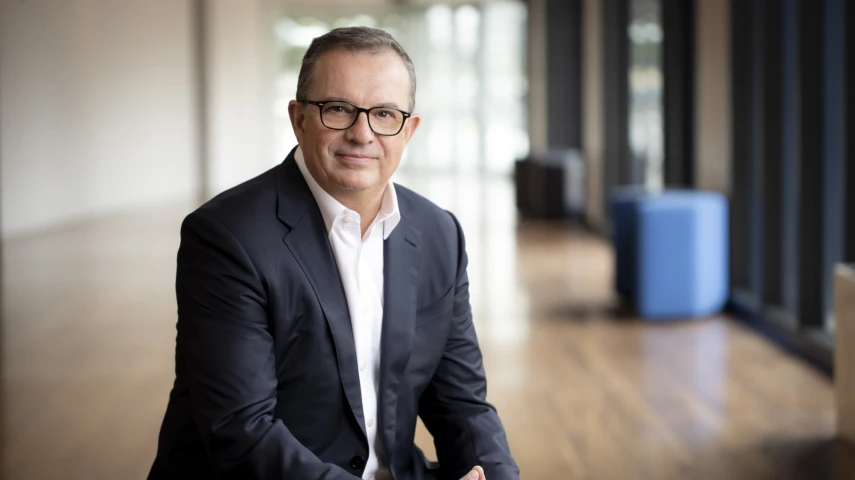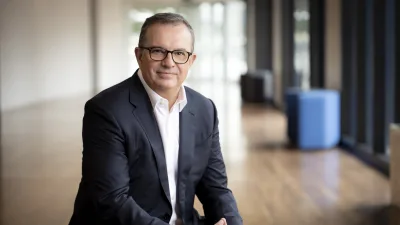Insignia’s Hartley on unlocking Shadforth and Bridges’ potential



As Insignia Financial looks to bolster its two financial advice businesses, its chief executive Scott Hartley describes how the firm will achieve its strategic growth plans.
The financial services company announced its strategy refresh for FY2026–30 at its investor day event in Sydney last week, stating that it will be maximising the benefits of scale and driving efficiency to achieve around $200 million per annum in net cost savings by FY30.
Its ultimate vision is for Insignia to become Australia’s “leading and most efficient wealth management company by 2030”.
Honing in on its advice division, Insignia is focused on increasing the capacity and productivity of its 200 financial advisers. Shadforth Financial Group – which is aimed at high-net-worth (HNW) individuals – has approximately 110 advisers, while Bridges Financial Services – which targets mass affluent consumers – has 90 advisers.
The company is seeking to increase its clients per adviser from 100 currently to 115–125 by FY28 and as high as 140 by FY30, marking a 40 per cent increase in client numbers.
Meanwhile, Insignia advisers currently report $0.8 million in revenue per adviser. The firm expects this to increase to $1–1.1 million in FY28 and to $1.1–1.3 million in FY30, a 62 per cent increase.
Hartley, who commenced as Insignia’s chief executive in March following the departure of Renato Mota, spoke with Money Management to delve deeper into how it will accomplish these strategic priorities for both Shadforth and Bridges.
“They are good businesses that we want to grow. We think there has never been a better time to be owning an advice business with the explosion of demand, offset by the reduction in the number of advisers in the industry. It’s a very good time for advisers generally in the industry,” the CEO remarked.
“Everyone is enjoying strong consumer demand and it’s really a matter of capacity as to how many they can serve. That’s the problem that we’re trying to solve – that capacity issue.”
With Insignia advisers currently servicing 100 clients each on average, Hartley explained how it will be harnessing technology and artificial intelligence (AI) to lift this figure.
Currently, it takes 20 hours to generate advice per client, he said, which includes areas such as fact finding, presenting to the client, implementing advice and supervising. As such, there is a “strong business case” to reinvent the advice process away from manual tasks to uplift productivity.
“Today our advisers, on average, have 100 clients each. My view is that should be closer to 150 and we’re targeting that through investment in advice technology more broadly, but certainly leveraging AI and in that process,” he said.
“[AI] is absolutely a game-changing technology that we are embracing and we have embraced historically – we’re not new to this game – but will embrace more strongly to help humans do a better job.”
This will mean utilising AI in the back-end administration side of operations to reduce the cost to service and free up advisers to spend more time with existing and new clients. Moreover, Insignia will be enhancing its usage of existing technology, such as Xplan.
Hartley continued: “It’s also how the technology works together – Xplan working with Wealth Central, which is our customer-facing engagement application, and how it works with the platforms that the advisers use as well.”
Shadforth
Looking at the Shadforth business in particular, this is the advice division which targets HNW individuals with $1–5 million in assets, and there has been much discussion in the industry about the need to target HNWs amid an intergenerational wealth transfer.
Shadforth has an average advice fee of $10.6k for its HNW client base and approximately $17 billion in funds under advice (FUA).
With 96 advisers across six capital cities, one of its strategic priorities is to grow its advisers in terms of numbers, talent and capability.
Hartley detailed that when it comes to adviser growth at Shadforth, the firm’s strength is building its numbers organically through training and progression, rather than hiring existing advisers who may not align with its business philosophy.
“Shadforth is a very tight culture that is almost like a club where you’ve got to earn the right to be here. So you can’t just employ an adviser off the street and become a productive Shadforth adviser. There’s a lot of philosophy around their consistent advice process and their investment philosophy, so that alignment is really important.
“We are quite good at growing advisers internally. They bring people into the business and have them work with their advice teams, but not providing advice. Then they gradually progress through their professional year and become an adviser down the track. So there’s that organic growth,” the chief executive said.
While Insignia has generally shifted away from its pursuit of large M&A transactions, Shadforth is open to targeted smaller “bolt-on” acquisitions, Hartley noted.
“We are looking at small bolt-on acquisitions, or tuck-ins, where an advice firm has a succession problem, so the adviser might be nearing retirement and wants to succeed their business and give ownership to someone else.
“If those businesses are aligned, particularly to the Shadforth investment philosophy, then they will look to potentially acquire those businesses. It’s little acquisitions, not big acquisitions.”
Bridges
For Bridges, which has an average advice fee of $4k and $6 billion in FUA, Hartley said a key focus is gradually increasing its fees to match industry standards. Unlike Shadforth, Bridges is aimed at mass affluent clients with $300,000 to $1 million, so it has a lower price point.
“The fees that Bridges charges on average is less than the average in the industry, so Bridges will progressively move their current fees to the average in the industry. The average in the industry is over $5,000 and Bridges is at $4,000, so they will bridge that gap progressively as they renew client relationships and do the annual renewals over time.”
Another strategic priority for the Bridges advice business is accelerating new client growth by improving referral quality and conversion rates, the firm stated in its investor day presentation.
Looking forward, Insignia’s ultimate goal of strengthening its adviser capacity will enable it to service more Australians as the demand for advice only climbs higher.
Hartley added: “I’m really excited about improving or increasing our capacity to be able to serve more Australians and help them achieve their retirement dreams, essentially. That’s a great thing to be in the business of doing. I’m most excited about that.
“We’re big believers in advice. We always have been as an organisation. We want to play a leadership role in the industry around that so we will continue to do that.”
Recommended for you
A financial advice firm has been penalised $11 million in the Federal Court for providing ‘cookie cutter advice’ to its clients and breaching conflicted remuneration rules.
Insignia Financial has experienced total quarterly net outflows of $1.8 billion as a result of client rebalancing, while its multi-asset flows halved from the prior quarter.
Prime Financial is looking to shed its “sleeping giant” reputation with larger M&A transactions going forward, having agreed to acquire research firm Lincoln Indicators.
An affiliate of Pinnacle Investment Management has expanded its reach with a London office as the fund manager seeks to grow its overseas distribution into the UK and Europe.















